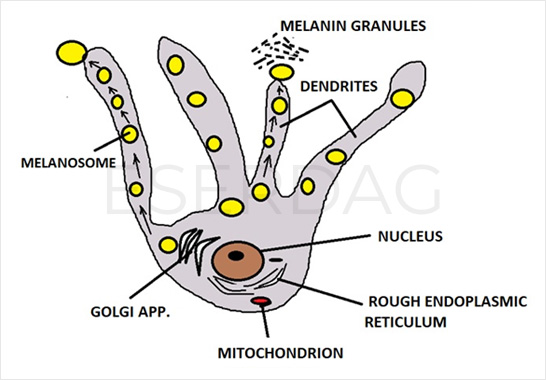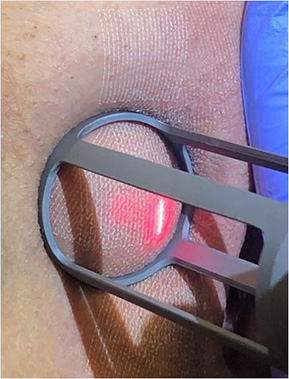
Darkening of the genital area is a genital aesthetic problem that affects patients psychologically. There are many different genetic and environmental causes of genital darkness. Results can be obtained with different methods applied to these patients.
In this section, topics such as "what are the causes of darkening of the genital area, how are the treatment methods, what should be done to avoid genital area darkness" are discussed. In addition, laser treatments and different solutions applied for discoloration are also explained. Genital darkness is also known as “genital area darkening”, “vulvar hyperpigmentation”, or “genital discoloration”.
Patients' demands for laser treatment of genital area bleaching have increased rapidly, especially in recent years. Treatments for discoloration are also referred to as “vulvar bleaching” or “pudenda bleaching”. The term "genital whitening" is not correct. The process is not whitening but the lightening of the color tone.
Instead of terms such as “genital area lightening”, “vulvar lightening”, “genital bleaching” would be more appropriate. In this section, different treatment methods other than genital bleaching with a laser will be discussed. It also covers how skin color is formed.
Before we get into laser genital lightening treatments, let us share how the skin color darkens.
The skin color is under the influence of two different factors that are genetically inborn and subsequently developed by accumulation. It is the cells we call 'melanocytes' that give the skin its basic color.
'Melanin', which is the most important component in the formation of 'pigmentation', that is, the color of the skin, is secreted by the cells in the skin that we call 'melanocytes'. Melanin is a pigment in the skin that protects the body from UV ligths.
Melanocytes have extensions resembling the arms of an octopus, called dendrites, and they provide the synthesis of melanin with the amino acid L-tyrosine. This is controlled by the 'tyrosinase' enzyme in the organelles called 'melanosomes' originating from the Golgi body. Tyrosinase enzyme activity is essential for the darkening of the color. The structure of melanocyte cell is shown below.

Structure of melanocyte cell
The melanin pigment, which gives the skin its color, is also found in the hair, eyes, and some parts of the brain. As exposure to sunlight increases, melanin production increases in direct proportion; thus, the skin color becomes darker and darker. On the other hand, not all melanocytes in the skin are active. They become active when exposed to the sun.
An excess of color pigment causes the discoloration of the skin. The color being darker than normal (hyperpigmentation) is due to genetic characteristics, drug use, chronic diseases, and hormonal reasons. Sometimes, hyperpigmentation may occur post-inflammatory.
In humans, six different skin types are defined according to the color darkness of the skin.
| Skin Type | Appearance | Sunburn | Tanning | Von Luschan Scale |
| I | White Skin It is very light-colored. blue, green eye color | Often | No tanning | 1–5 |
| II | Light skin It is common in Europeans. light eye color | Usually | Very difficult | 6–10 |
| III | wheatish skin It is medium-light in tone. It is common in Southern Europeans. light or dark eye color | Mild | Medium | 11–15 |
| IV | brunette skin It is light brown. It is common in the Mediterranean. Brown or black eye color | Rarely | Easy | 16–21 |
| V | dark skin It is dark brown. black eye color | Very rarely | Very easy | 22–28 |
| VI | black skin It is very dark. black eye color | Extremely rarely | The natural skin color is black, and the skin color does not darken | 29–36 |
Genital darkness or genital hyperpigmentation can occur for different reasons. Among the causes of darkening of the color of the external genital area, which we call “vulva”, are the following:
Some systemic disorders (especially insulin resistance) and drugs used can also cause genital discoloration.
Darkening of the genital and anal area color can cause social and psychological problems, especially insecurity in sexual intercourse. Genital darkness can also cause unhappiness and self-confidence problems.
In recent years, genital whitening treatments in women, and interestingly also in men, have entered a rapid increase trend.
Many options can be provided as the treatment methods for genital area lightening.
CO2 lasers, Er:YAG lasers, and Q-switched lasers are frequently used for genital area bleaching (vaginal lightening) treatments.
Genital aesthetics by laser is an increasing demand globally. Vaginal lightening treatment is performed using the fractional head of Er:YAG or CO2 lasers. Genital bleaching occurs due to the peeling of the top layer of the skin with the heating effect of the laser on the tissue.
Q-switch lasers are lasers with a wavelength between 400-1100 nm that directly target melanin pigment. The Q-switched technologies used today are Q-switched alexandrite, Q-switched ruby, and Q-switched Nd:YAG lasers. For this purpose, they are also used for tattoo removal, café-au-lait macules, birthmarks, melasma, freckles, and age spots treatments.
The skin gets its color from dermal components, epidermal components, and subcutaneous blood vessels. Therefore, whichever region the darkening belongs to is the region targeted by the laser.
The application area should be shaved. Before laser application, the energy and intensity parameters of the laser are adjusted according to the skin color of the patient. The procedure can be performed under sedation anesthesia or after applying numbing creams.
The laser whitening area is first marked with a marker pen. This area is then scanned with a laser. The average treatment time is between 3-5 minutes. Generally, a single session is sufficient, but 2-3 sessions can be repeated every 4-6 weeks if necessary or requested by the patient.

Genital whitening procedure with fractional carbon dioxide laser
The type of skin color of the person is important when performing the genital laser bleaching. Since the melanin pigment is more in those with darker skin color, the tissue's rate of light retention increases. For this reason, lower energy is given to those with more darkening.
Genital area bleaching with laser cannot be performed in the following cases:
Sometimes with the external genital area, sometimes alone, bleaching treatments can be performed around the anus. Anal lightening treatments are the same as genital area treatments. The same lasers and bleaching solutions can be used.
Perianal whitening is preferred not only by women, but also by men and gay society.
After a few days of lightening with carbon dioxide and erbium laser, the skin first turns brown and then peels off on its own. The vibrant, bright, and pinkish skin texture from the bottom will provide a more beautiful and youthful appearance. However, apart from the epidermis (upper skin),which gives the skin its color, there are also dermal pigment components and vascular structures. Therefore, the results obtained may not be equally satisfactory for everyone.
After the laser vaginal and anal bleaching process, approximately 30-40% of the lightening occurs. To increase the effectiveness, some mesotherapy products can also be applied in the same session. “Genital mesotherapy” is performed by some injections of the ampoules including lightening elements, vitamins, and minerals.
After the laser bleaching process, there may be complaints such as burning, itching, stinging, prickling for a few weeks. Creams and cicatrices given after the procedure will make this process more comfortable. Soothing creams and moisturizers containing collagen may also be recommended.
Results after laser treatment are seen on average one month after the procedure. A single session may be sufficient most of the time, but 2-4 more sessions can be performed every 1-2 months if necessary. Usually, there is no need for a prohibition of sexual intercourse. The next day, you can take a shower with warm water and wash the genital area without rubbing with soap. Painkillers can be used when necessary.
No, it does not. The depth of penetration of the laser light into the skin is less than 1 mm. There is absolutely no possibility of reaching the uterus or ovaries. That is why it never causes infertility. It can be easily applied to virgins or unmarried people.
It is important to protect yourself from the sun for a month after laser lightening. For this reason, it is more appropriate not to do the procedure in the summer months. It will also be beneficial to use the creams prescribed to you. There is no need for rest, and it is possible to return to routine life immediately after the procedure.
During the laser treatment for genital whitening, especially if the laser's energy is set to a high level, complications such as permanent hypopigmentation (complete whitening of the skin color),burns, scar formation, and color darkening due to post-inflammatory hyperpigmentation can be seen. For this reason, laser and genital area bleaching treatments should be performed by physicians experienced in this field. After the power of the laser is adjusted in accordance with the tissue of the patient, the results obtained by performing the procedure are quite pleasing.
Apart from the laser, there are also different methods for the treatment of genital darkness. Among them;
Dermamelan intimate is a new and very effective product for the treatment of the genital darkness problem. It’s performed in the office as a consecutive application of different solutions and creams. It’s especially recommended in patients who have extent genital hyperpigmentation towards inner thighs and mons pubis area.
In our Istanbul and Ankara clinics in Turkey, fractional carbon dioxide lasers, mesotherapy products, dermamelan intimate and peeling creams are used as bleaching treatments in the genital area and around the anus. Before the treatment, the person's skin type is determined, and then the most appropriate treatment for the skin type is started.
Although one session is usually sufficient for laser lightening treatments in our clinics in Turkey, it can be performed in several sessions, depending on the patient's request. Perianal lightening treatments can also be used for the patients who demand it.
The genital area bleaching treatment costs vary according to the skin structure of the person, the application area, and the number of sessions. The brand of the laser used is also effective in the costs. It would be beneficial to talk to the clinic about genital area lightening and bleaching treatment prices.